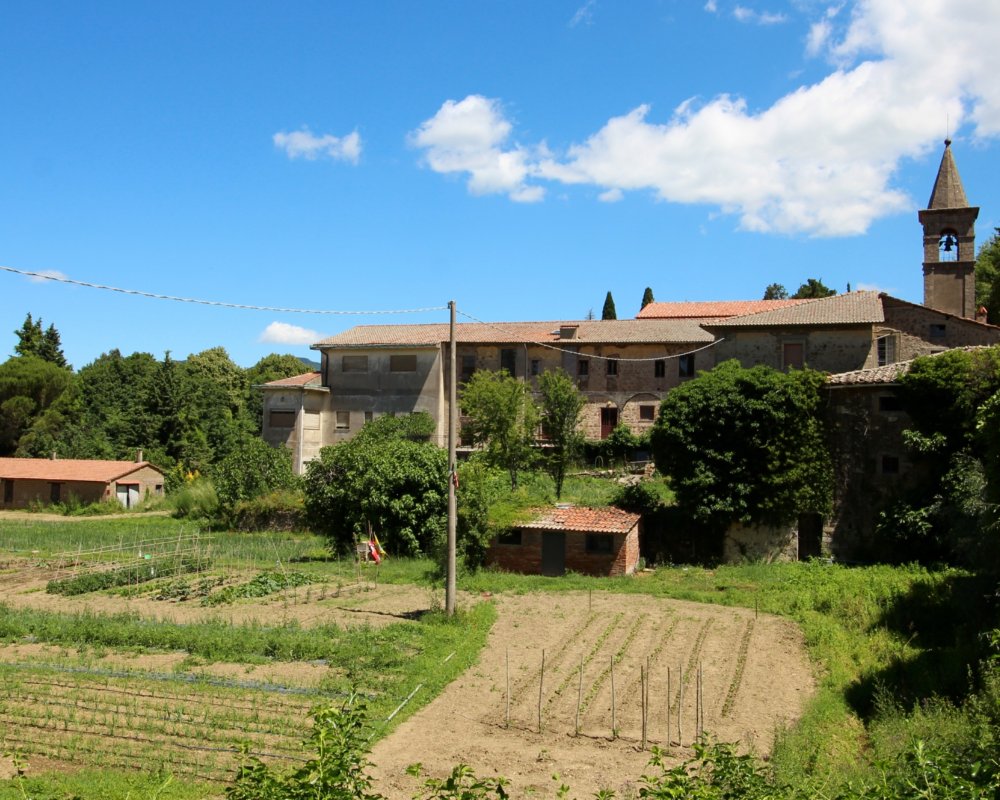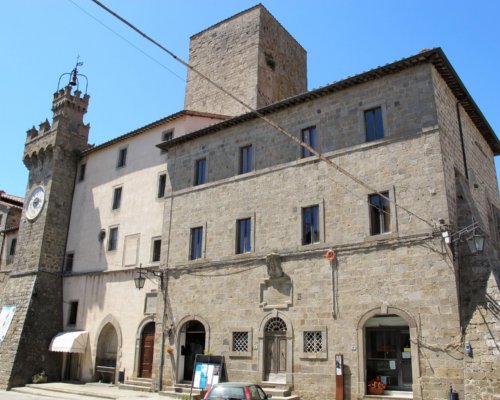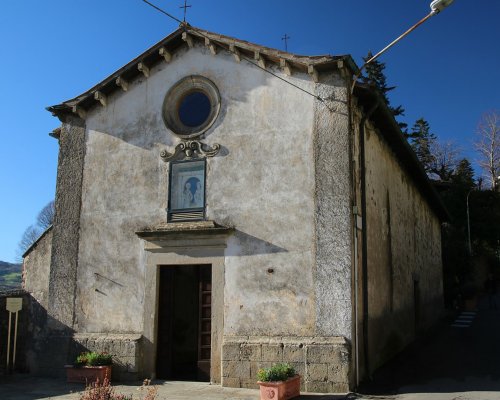


Exploring the “terzieri” in the medieval town in the Amiata area
The Amiata region is home to the small village of Santa Fiora, designated one of the Most Beautiful Villages in Italy. Indeed, this splendid medieval village vaunts beauty around every corner, with its small piazzas, cobblestone streets and views of the River Fiora.
Santa Fiora is divided into three terzieri, or neighbourhoods: Castello, Borgo and Montecatino. Let’s take a walk through each one to discover what surprises they hold.
This is the oldest part of Santa Fiora, where we can find traces of some of the buildings and fortifications that date back to when the town was ruled by the Aldobrandeschi family. Let’s start at the Parish Church of Sante Flora e Lucilla, dedicated to the town’s two patron saints. The Romanesque church was renovated in the 1400s and is now home to artworks by many famous artists, notably the Della Robbias, whose works here include a Baptism of Christ, Coronation of the Virgin and the panels on the pulpit.
Let’s continue to Palazzo Sforza, an imposing Renaissance building in piazza Garibaldi. The building is today home to the town hall, but it also houses the Monte Amiata Mercury Mining Museum, dedicated to the history and techniques of mercury extraction in the area in the 19th and 20th centuries. Visitors can learn about the tools used by miners, explore a small archeological section and reflect on the scarifies miners made for their work.
For a jump forward in time, the Suffragio Church was built between 1716 and 1726 in the Baroque style. Simple on the outside, visitors will be stunned to discover the clean elegance of the interior, home to artworks like a painting of Madonna and Christ in Ecstasy with Saints Gregory, Nicholas of Tolentino and Jerome.
This is the oldest part of Santa Fiora, where we can find traces of some of the buildings and fortifications that date back to when the town was ruled by the Aldobrandeschi family. Let’s start at the Parish Church of Sante Flora e Lucilla, dedicated to the town’s two patron saints. The Romanesque church was renovated in the 1400s and is now home to artworks by many famous artists, notably the Della Robbias, whose works here include a Baptism of Christ, Coronation of the Virgin and the panels on the pulpit.
Let’s continue to Palazzo Sforza, an imposing Renaissance building in piazza Garibaldi. The building is today home to the town hall, but it also houses the Monte Amiata Mercury Mining Museum, dedicated to the history and techniques of mercury extraction in the area in the 19th and 20th centuries. Visitors can learn about the tools used by miners, explore a small archeological section and reflect on the scarifies miners made for their work.
For a jump forward in time, the Suffragio Church was built between 1716 and 1726 in the Baroque style. Simple on the outside, visitors will be stunned to discover the clean elegance of the interior, home to artworks like a painting of Madonna and Christ in Ecstasy with Saints Gregory, Nicholas of Tolentino and Jerome.
The heart of this neighbourhood is hinted at in the name: catino refers to a place to collect water, and indeed, this is where you can find the Peschiera, built in the 16th century to collect water from the River Fiora’s springs. Thanks to the Peschiera, this area became a popular site for factories and mills, which used water power to run their activities.
Nearby, we find the Church of the Madonna della Neve, home to wonderfully conserved frescoes by Francesco Nasini and a unique floor, covered in glass panels so you can look at the the Fiora as it gushes by just below your feet!
A fun thing to see in this neighbourhood is the Sasso della Fata, a large boulder on the edge of town with a curious legend: it’s said that the sasso is the petrified soul of an old woman who died of a broken heart for all the suffering and injustice in the world.
The heart of this neighbourhood is hinted at in the name: catino refers to a place to collect water, and indeed, this is where you can find the Peschiera, built in the 16th century to collect water from the River Fiora’s springs. Thanks to the Peschiera, this area became a popular site for factories and mills, which used water power to run their activities.
Nearby, we find the Church of the Madonna della Neve, home to wonderfully conserved frescoes by Francesco Nasini and a unique floor, covered in glass panels so you can look at the the Fiora as it gushes by just below your feet!
A fun thing to see in this neighbourhood is the Sasso della Fata, a large boulder on the edge of town with a curious legend: it’s said that the sasso is the petrified soul of an old woman who died of a broken heart for all the suffering and injustice in the world.
This neighbourhood is historically where many of the artisan workshops were located. Something interesting worth seeing is the Porticciola, a medieval gate that connected Castello to Borgo. The Porticciola vaunts a typically medieval structure, with a segmental arch and a small, recessed, trefoil window.
This neighbourhood was also where the Jewish ghetto was from the 16th to 18th centuries, memory of which can be found in the toponym of piazza del Ghetto. The square is one of the few in town with a single entrance and is today bordered by the Church of Santa Chiara and the Augustinian Convent. Few other traces of its Jewish history remain.
This neighbourhood is historically where many of the artisan workshops were located. Something interesting worth seeing is the Porticciola, a medieval gate that connected Castello to Borgo. The Porticciola vaunts a typically medieval structure, with a segmental arch and a small, recessed, trefoil window.
This neighbourhood was also where the Jewish ghetto was from the 16th to 18th centuries, memory of which can be found in the toponym of piazza del Ghetto. The square is one of the few in town with a single entrance and is today bordered by the Church of Santa Chiara and the Augustinian Convent. Few other traces of its Jewish history remain.